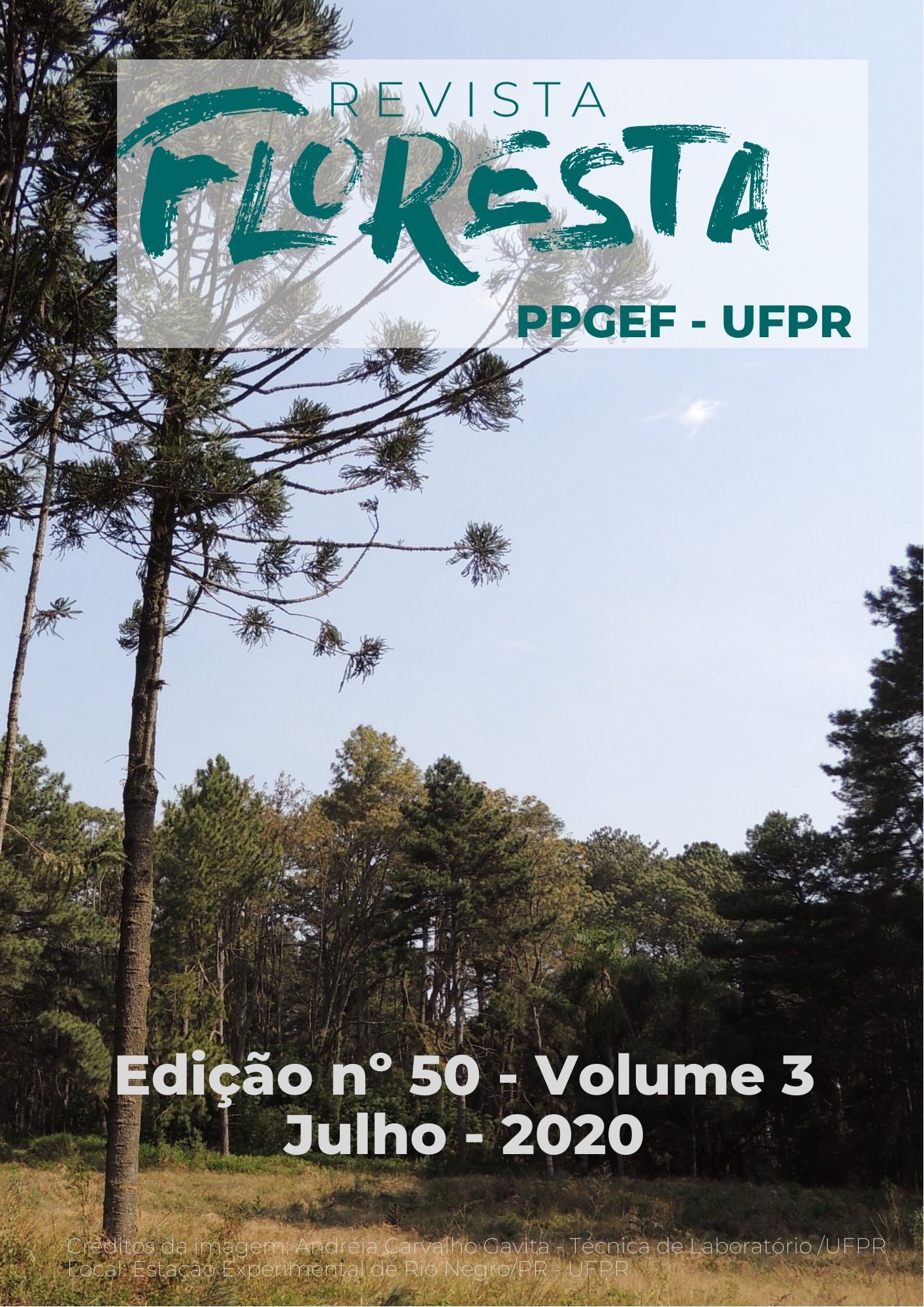POPULATION DYNAMICS OF THE MICROBIOTA IN THE LITTER OF TWO TREE SPECIES OF THE ATLANTIC FOREST
DOI:
https://doi.org/10.5380/rf.v50i3.61279Palavras-chave:
Paubrasilia echinata, Inga laurina, nutrient cyclingResumo
This study analyzes microbiota population dynamics as a function of nutrient release rate during litter decomposition. For that, we observed two tree species native to the Atlantic Forest: brazilwood (Paubrasilia echinata) and inga (Inga laurina). To assess nitrogen (N), phosphorus (P), and potassium (K) release rates from the litter, we performed six collections over 365 days. In these collections, we placed polyvinyl bags called ‘litter bags’ below the treetops of the chosen species to collect dry leaves. To identify the groups of litter microorganisms (fungi, bacteria, and actinomycetes), we used the plate culture method to count the number of colony-forming units (CFU), and the fatty acid profile method, through biomarkers, associating nutrient release rate and abiotic factors (temperature and rainfall). Nutrient release rate correlates with litter decomposition at 140 days, and most microorganisms correlate with litter decomposition at 30 days. Nitrogen and phosphorus release rates correlate with rainfall. Fungi correlate with P release rate in inga litter decomposition. The bacteria biomarker 17:1 was the only one that correlated with N and P release rates. In conclusion, rainfall affects nutrient solubilization in the studied species, and microbiota differs between the species. When comparing the two methods to identify these microorganisms, information from one method complements information from the other, since both provide different but interdependent data.
Downloads
Publicado
Como Citar
Edição
Seção
Licença
Direitos Autorais para artigos publicados nesta revista são do autor, com direitos de primeira publicação para a revista. Em virtude da aparecerem nesta revista de acesso público, os artigos são de uso gratuito, com atribuições próprias, em aplicações educacionais e não-comerciais.A revista, seguindo a recomendações do movimento Acesso Aberto, proporciona acesso publico a todo o seu conteudo, seguindo o principio de que tornar gratuito o acesso a pesquisas gera um maior intrcambio global de conhecimento.
Conteúdos do periódico licenciados sob uma CC BY-NC-SA 4.0



